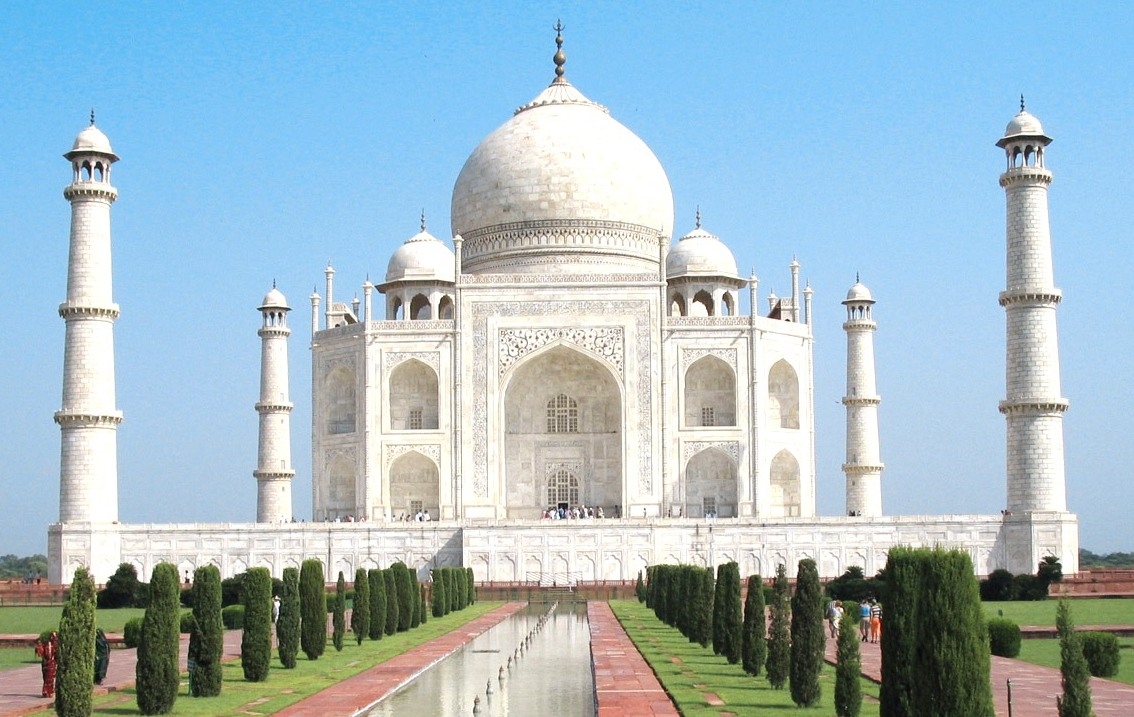The Taj Mahal is located on the southern bank of the Yamuna River in the Indian city of Agra.
The Taj Mahal is fully constructed with white marbles and it was built by Shah Jahan for his beloved wife Mumtaz. It is one of the Seven Wonders of the World for reasons more than just looking magnificent. The history of Taj Mahal that adds a soul to its magnificence, a soul that is filled with love, loss, sorrow, and love again. Taj mahal is the fine example to the people of the world, how to value the true relationship. An example of how deeply a man loved his wife, that even after she deceased but remained in memory of Shah Jahan, by constructing this beautiful monument, he made sure that this memory would never fade away from people of the world. This man was the Mughal Emperor Shah Jahan, who was in love with Mumtaz Mahal, his beloved wife. She was a Muslim Persian princess (her name was Arjumand Banu Begum before marriage) and Shah Jahan was the son of Mughal Emperor Jehangir and grandson of Akbar the Great. He was at the age of 14 met Mumtaz and fell in love with her. Five years later in the year of 1612, they got married.
Mumtaz Mahal is an intimate companion of Shah Jahan, She died in 1631, while giving birth to their 14th child. She was always in the memory of Shah Jahan, As a remembrance of his beloved wife, that Shah Jahan built a magnificent monument as a tribute to her, which we today know as the "Taj Mahal". The tomb of Mumtaz Mahal and Shah Jahan is in Taj Mahal. The construction of Taj Mahal started in the year 1631, with Masons, stonecutters, carvers, inlayers, painters, calligraphers, dome-builders and other craftsperson were requested from the whole of the empire and also from Central Asia and Iran. It tooks almost 22 years to build the Taj Mahal what we see today. An epitome of love, Taj Mahal was built with the services of 22,000 laborers and 1,000 elephants. The monument was built completely out of white marbles, which was brought in from all over India and central Asia. After an expenditure of approximately 32 million rupees, the Taj Mahal was fully and finally completed in the year 1653.
It was soon after the completion of Taj Mahal, Shah Jahan was dethroned by his own son Aurangzeb and he was put under house arrest at nearby Agra Fort. Shah Jahan was entombed in this mausoleum along with his wife Mumtaz Mahal. Moving further down the history, At the end of 19th century, British Viceroy Lord Curzon ordered a sweeping restoration project, which was completed in 1908, as a measure to restore what was lost during the Indian rebellion of 1857: Taj Mahal was blemished by the British soldiers and government officials who also dispossessed the monument of its spotless beauty, by chiseling out the precious stones like lapis lazuli from its walls. This stone symbolizes the spiritual love. The British style lawns that we see today adding on to the beauty of Taj Mahal were refashioned around the same time. Despite prevailing controversies, past and present threats from Indo-Pak war and environmental pollution, this epitome of love continuous to shine and attract people from all over the world. Since this Taj Mahal was selected has one of the Seven Wonders of the world for its magnificent beauty, it added honor to India.
